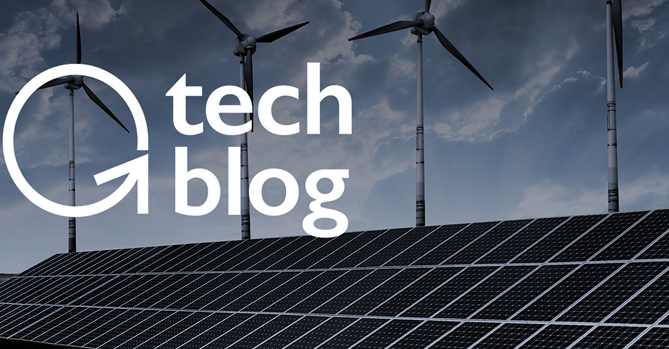The energy industry is being aggressively disrupted by converging exponential technologies.
In just five days, the Sun provides Earth with an energy supply exceeding all proven reserves of oil, coal, and natural gas. Capturing just 1 part in 8,000 of this available solar energy would allow us to meet 100 percent of our energy needs.
As we leverage renewable energy supplied by the sun, wind, geothermal sources, and eventually fusion, we are rapidly heading towards a future where 100 percent of our energy needs will be met by clean tech in just 30 years.
During the past 40 years, solar prices have dropped 250-fold. And, as these costs plummet, solar panel capacity continues to grow exponentially.
On the heels of energy abundance, we are additionally witnessing a new transportation revolution, which sets the stage for a future of seamlessly efficient travel at lower economic and environmental costs.
Entrepreneur and inventor Ramez Naam is a go-to expert on all things energy and environment.
In the next five years, he forecasts five energy trends, each poised to disrupt major players and birth entirely new business models.
Top 5 Energy Breakthroughs (2019-2024)
- First “1 cent per kWh” deals for solar and wind signed.
Ten years ago, the lowest price of solar and wind power fell between 10 to 12 cents per kilowatt hour (kWh), over twice the price of wholesale power from coal or natural gas.
Today, the gap between solar/wind power and fossil fuel-generated electricity is nearly negligible in many parts of the world. In G20 countries, fossil fuel electricity costs between 5 to 17 cents per kWh, while the average cost per kWh of solar power in the U.S. stands at under 10 cents.
Spanish firm Solarpack Corp Technological recently won a bid in Chile for a 120 MW solar power plant supplying energy at 2.91 cents per kWh. This deal will result in an estimated 25 percent drop in energy costs for Chilean businesses by 2021.
Naam indicates, “We will see the first unsubsidized 1.0 cent solar deals in places like Chile, Mexico, the Southwest U.S., the Middle East, and North Africa, and we’ll see similar prices for wind in places like Mexico, Brazil, and the U.S. Great Plains.”
- Solar & Wind will reach >15 percent of U.S. electricity, and begin to drive all growth.
Just over 8 percent of energy in the U.S. comes from solar and wind sources. In total, 17 percent of American energy is derived from renewable sources, while a whopping 63 percent is sourced from fossil fuels, and 17 percent from nuclear.
Last year in the U.K., twice as much energy was generated from wind than from coal. For over a week in May, the U.K. went completely coal-free, using wind and solar to supply 35 percent and 21 percent of power, respectively. While fossil fuels remain the primary electricity source, this weeklong experiment highlights the disruptive potential of solar and wind power that major countries like the U.K. are beginning to emphasise.
“Solar and wind are still a relatively small part of the worldwide power mix, only about 6 percent. Within five years, it’s going to be 15 percent in the U.S. and more than close to that worldwide,” Naam predicts. “We are nearing the point where we are not building any new fossil fuel power plants.”
- It will be cheaper to build new solar/wind/batteries than to run on existing coal.
Last October, Northern Indiana utility company NIPSCO announced its transition from a 65 percent coal-powered state to projected coal-free status by 2028. Importantly, this decision was made purely on the basis of financials, with an estimated $4 billion in cost savings for customers. The company has already begun several initiatives in solar, wind, and batteries.
NextEra, the largest power generator in the U.S., has taken on a similar goal, making a deal last year to purchase roughly 7 million solar panels from JinkoSolar over four years. Leading power generators across the globe have vocalised a similar economic case for renewable energy.
- ICE car sales have now peaked. All car sales growth will be electric.
While electric vehicles (EV) have historically been more expensive for consumers than internal combustion engine-powered (ICE) cars, EV’s are cheaper to operate and maintain. The yearly cost of operating an EV in the U.S. is about $485, less than half the $1,117 cost of operating a gas-powered vehicle.
And as battery prices continue to shrink, the upfront costs of EV’s will decline until a long-term payoff calculation is no longer required to determine which type of car is the better investment. EV’s will become the obvious choice.
Many experts including Naam believe that ICE-powered vehicles peaked worldwide in 2018 and will begin to decline over the next five years, as has already been demonstrated in the past 5 months. At the same time, EV’s are expected to quadruple their market share to 1.6 percent this year.
- New storage technologies will displace Li-ion batteries for tomorrow’s most demanding applications.
Lithium ion batteries have dominated the battery market for decades, but Naam anticipates new storage technologies will take hold for different contexts. Flow batteries, which can collect and store solar and wind power at large scales, will supply city grids. Already, California’s Independent System Operator, the non-profit that maintains the majority of the state’s power grid, recently installed a flow battery system in San Diego.
Solid-state batteries, which consist of entirely solid electrolytes, will supply mobile devices in cars. A growing body of competitors, including Toyota, BMW, Honda, Hyundai, and Nissan, are already working on developing solid-state battery technology. These types of batteries offer up to six times faster charging periods, three times the energy density, and eight years of added lifespan, compared to lithium ion batteries.
Final Thoughts
Major advancements in transportation and energy technologies will continue to converge over the next five years. A case in point, Tesla’s recent announcement of its “robotaxi” fleet exemplifies the growing trend towards joint priority of sustainability and autonomy.
On the connectivity front, 5G and next-generation mobile networks will continue to enable the growth of autonomous fleets, many of which will soon run on renewable energy sources. This growth demands important partnerships between energy storage manufacturers, automakers, self-driving tech companies, and ridesharing services.
In the eco-realm, increasingly obvious economic calculi will catalyse consumer adoption of autonomous electric vehicles. In just five years, Naam predicts that self-driving rideshare services will be cheaper than owning a private vehicle for urban residents. And by the same token, plummeting renewable energy costs will make these fuels far more attractive than fossil fuel-derived electricity.
As universally optimised AI systems cut down on traffic, aggregate time spent in vehicles will decimate, while hours in your (or not your) car will be applied to any number of activities as autonomous systems steer the way. All the while, sharing an electric vehicle will cut down not only on your carbon footprint but on the exorbitant costs swallowed by your previous SUV. How will you spend this extra time and money? What new natural resources will fuel your everyday life?






